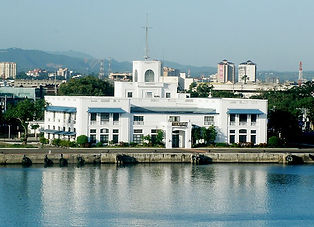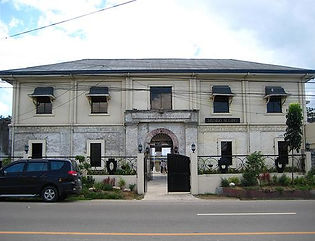Magellan's Cross
It is a Christian cross planted by Portuguese and Spanish explorers as ordered by Ferdinand Magellan upon arriving in Cebu in the Philippines on March 15, 1521. If you visit Basilica del Santo Niño, you wouldn’t miss it. It’s next to the the church. Its image is also found in the official Seal of the City of Cebu.

Places to Visit Around Cebu City
www.cebusupport.com

Basilica del Santo Niño ( Santo Niño Church)
It is the oldest Roman Catholic Church founded by an Augustinian priest in April 28, 1565. The center of faith by most Cebuanos where the image of the Santo Niño de Cebú is located, a statue depicting the Child Jesus. The church has also a museum inside.

Cebu Provincial Capitol
Don’t misunderstand it with the Capitol Hill building of the USA but I can’t blame you because it has an American influence. It was built during the American occupation in 1937 and inaugurated in 1938. It is where the governor of Cebu takes office. The building is situated in the north end of Osmeña Boulevard at the corner of Escario Street, Cebu City.

Fort San Pedro (Fuerza de San Pedro)
If you visit this place, you might wonder whether you are in Spain or not. It was used as a military defense structure, built by Spanish and indigenous Cebuano labourers under the command of Spanish conquistador, Miguel López de Legazpi and the Spanish Government in Cebu. It is located in the area now called Plaza Indepedencia, near the Pier Area of Cebu City, Philippines.

Malacañang sa Sugbo
It is the official residence of the President of the Philippines in the Visayas. It is located in Cebu City near the Port Area and Fort San Pedro, and within walking distance from the Basilica Minore del Santo Niño, Magellan's Cross, and City Hall. It is named after the Malacañang Palace, the official residence of the President in the capital city of Manila.

Cebu Taoist Temple
Built in 1972, the Cebu Taoist Temple is located in Beverly Hills Subdivision in Cebu City, Philippines. The temple was built by Cebu's substantial Chinese community. With an elevation of 300 meters (980 ft.) above sea level, the temple is a towering, multi-tiered, multi-hued attraction accessible by three separate winding routes.

Museo Sugbo
One day trip is not enough to explore Cebu, so to know more about its history, try to visit Museo Sugbo. It is located along M. J. Cuenco Ave. The museum used to house the Cebu Provincial Rehabilitation and Detention Center.
Photos courtesy of wikipedia
What's new Cebu?
Cebusupport.com
cebudailynews.inquirer.net
cebusupport.com
cebusupport.com
cebusupport.com
